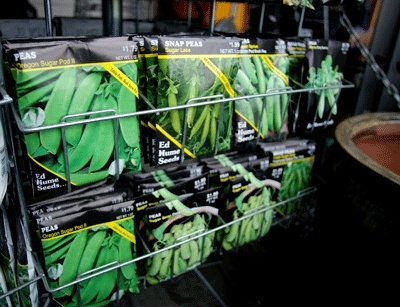Wonderful and unusual vegetables are beginning to be seen in many of our local farmers markets.
It makes it easy to try out new tastes and unusual textures. And it is just as easy to grow some of these great plants, and the end of July is a great time to start those vegetables that will mature before frost sets in.
Kids enjoy seeing a seed become something to eat and are more inclined to like their vegetables if they grew the vegetables themselves.
There is still time to plant bush beans that will mature in September. Planted by mid-August, leafy crops such as lettuce, bok choy, kale, spinach and mustard greens can be expected to give good yields.
Beautiful rainbow chard with white, yellow and red stalks will produce in 60 days and grows quickly with summer heat. It has great flavor and cooks up like spinach. Radishes take just a few weeks and can have white, rose and yellow skins, as well as the more common red, and there is even one that has green skin and a rosy red flesh.
Carrots, too, can be planted, and although they can take up to 75 days to mature, they take cold weather well.
Carrots come in a variety of colors — white, yellow, orange, red-orange and even purple — and can be long and tapered, round or short. The red and purple carrots have high amounts of lycopene, a substance that has been correlated with cancer prevention.Beets will mature in a short time, usually from 50 to 60 days.
Everyone knows the red type, but there are also yellow, white and even striped varieties. Many of these lesser known varieties are sweeter than the red ones, and all beets can be enjoyed for both root and leaves. The leaves are cooked like spinach.
As with other plantings, enrich the soil with compost and a handful of organic fertilizer before planting. These wonderful plants can be mixed into your perennial border for the taller plants or even used as a border for your garden.
Some, like the more ornamental kales, will provide color throughout the winter garden and bloom pale yellow in the spring. Instead of paying $2.50 per plant, you can grow your own for the price of a packet of seeds.
Once bitten by the bug of growing your own, you will discover the huge selection of both hybrid and heirloom seeds.
A major grower of open-pollinated seeds, Baker Creek Heirloom Seeds (www.rareseeds.com) offers over 190 varieties of tomatoes, 150 kinds of squash and over 100 melons, some of which will grow well and produce fruit here in Western Washington.
Our local Hume seeds (www.humeseeds.com) has been growing and developing seeds here in the Pacific Northwest for over 40 years and can be found easily on local seed racks. Hume seeds are specifically designed for the Pacific Northwest’s cool climate — untreated, very fresh and not genetically modified. If you become interested in growing your own fruit on trees or bushes, Raintree Nursery in Morton, Wash., (www.raintreenursery.com), has been in business since 1972 and is known throughout the nation for its fine selection.
Taste alone will encourage you to grow your own. Your veggies will have the highest amount of vitamins available because they have not sat for days in the grocery store before being prepared. Your vegetables will also be sweeter, as the sugars available won’t have been converted into starch in storage. And all this from a few seeds set out in the midst of summer.
Linda Stephens-Urbaniak can be reached at Lindagardenlady@speakeasy.com


